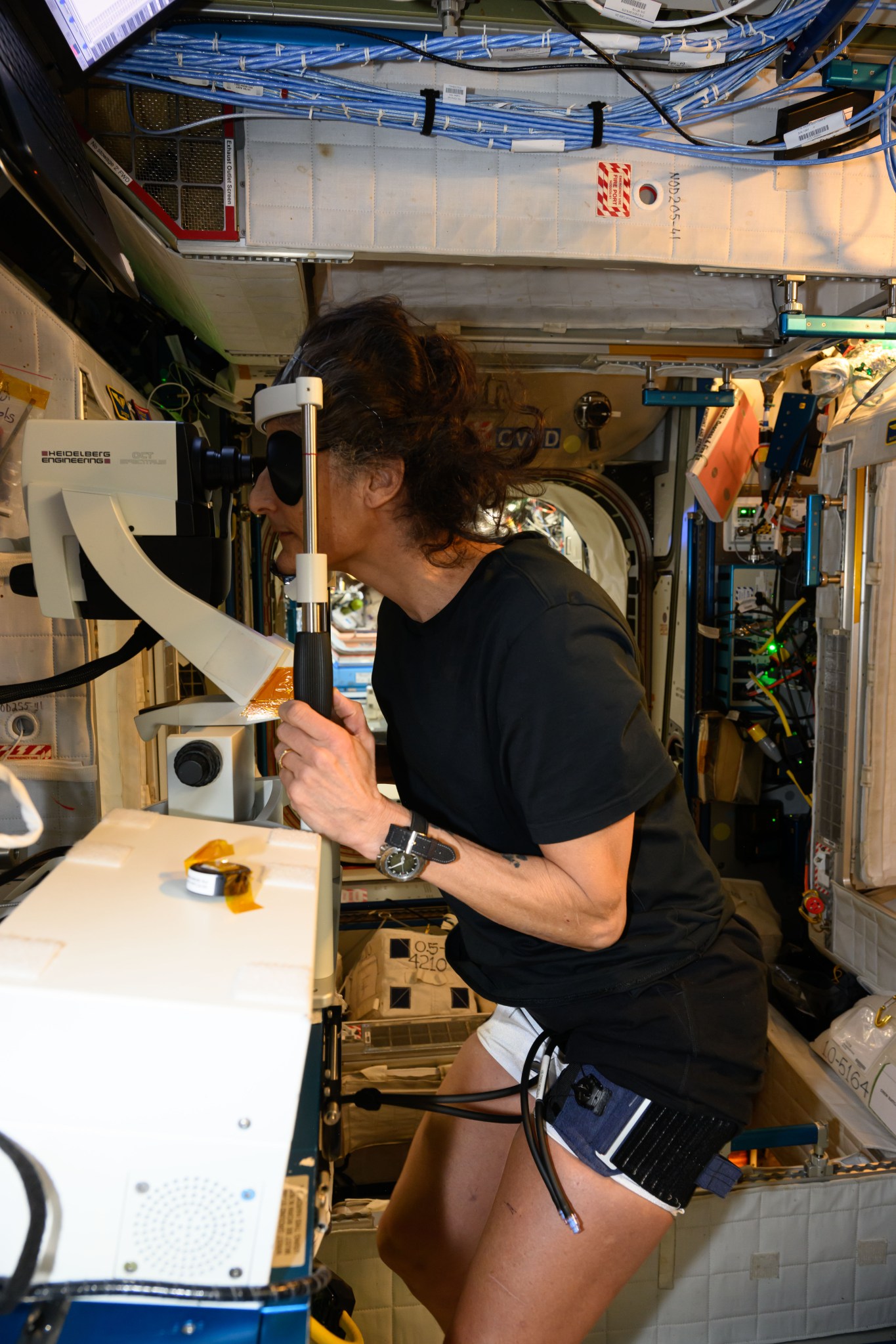NASA and its international partners are investigating significant vision changes experienced by astronauts aboard the International Space Station (ISS). As missions extend beyond six months, many astronauts have reported a need for stronger reading glasses and other visual impairments. Researchers have identified these symptoms as part of what is termed Space-Associated Neuro-Ocular Syndrome (SANS).
During their time in microgravity, astronauts face unique physiological challenges. Blood and cerebrospinal fluid tend to shift toward the head, which may contribute to the swelling observed in the optic disc, where the optic nerve enters the retina. This phenomenon raises concerns about long-term vision health for astronauts, prompting further investigation into potential countermeasures.
Investigating Fluid Shifts and Eye Health
One ongoing study, known as the Thigh Cuff investigation, aims to determine if wearing tight leg cuffs can alter the movement of bodily fluids. The hypothesis is that such devices might mitigate the adverse effects associated with fluid shifts, which include the symptoms of SANS. A successful outcome from this research could not only benefit astronauts on future missions to the Moon and Mars but may also provide solutions for patients on Earth suffering from conditions that cause fluid accumulation in the upper body.
Prior investigations like the Fluid Shifts study, conducted from 2015 to 2020, were pivotal in identifying how microgravity affects blood drainage from the brain. The Vision Impairment and Intracranial Pressure (VIIP) research has explored the correlation between fluid shifts and increased intracranial pressure, which may exacerbate SANS symptoms. Utilizing a combination of clinical eye exams, imaging techniques, and questionnaires from around 300 astronauts, researchers are developing a more comprehensive understanding of these changes.
In recent findings, a specific astronaut demonstrated greater-than-average eye changes after a six-month mission. Factors such as B vitamin supplementation and lower cabin carbon dioxide levels were noted to potentially improve the astronaut’s condition. While these observations are still under analysis, they suggest that environmental factors can significantly influence the symptoms of SANS.
Eye Tissue Changes and Future Countermeasures
Another valuable investigation is the SANSORI study conducted by the Canadian Space Agency (CSA). This research employed Optical Coherence Tomography (OCT) to examine whether reduced stiffness in eye tissues contributes to SANS. The findings suggest that long-duration spaceflight alters the mechanical properties of eye tissues, thereby enhancing the risk of developing SANS. This insight is crucial for both astronauts and patients on Earth, particularly those experiencing age-related eye conditions.
Additionally, the MHU-8 investigation from the Japan Aerospace Exploration Agency (JAXA) has shed light on potential genetic changes within the optic nerve and retinal tissue of mice post-spaceflight. Researchers found that artificial gravity might counteract these changes, indicating a promising direction for future space missions.
As these studies continue to evolve, they hold the potential to not only mitigate vision impairments in astronauts but also lead to advancements in the treatment of similar conditions on Earth. The commitment of organizations like NASA and JAXA to tackle these pressing health concerns underscores the importance of ensuring astronaut well-being during extended missions in space.
With ongoing research and innovative approaches, the quest to safeguard vision health in space is gaining momentum, paving the way for more ambitious explorations beyond our planet.
